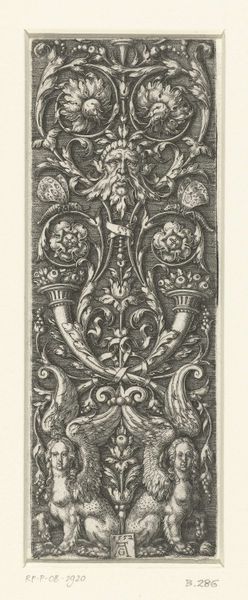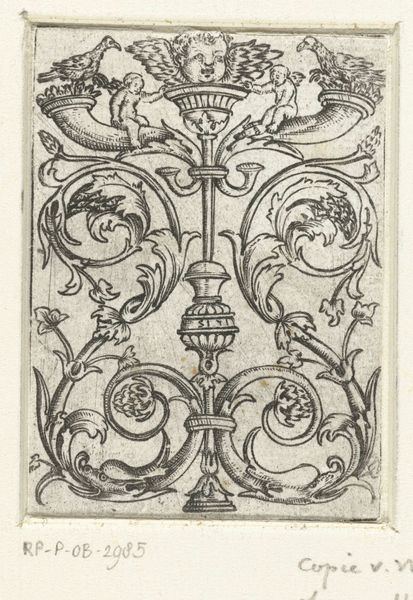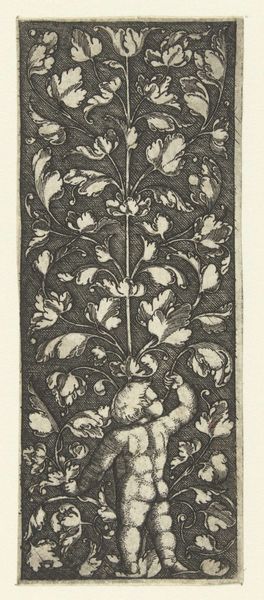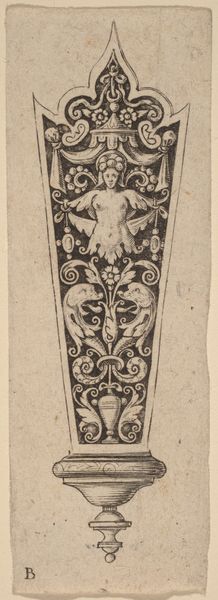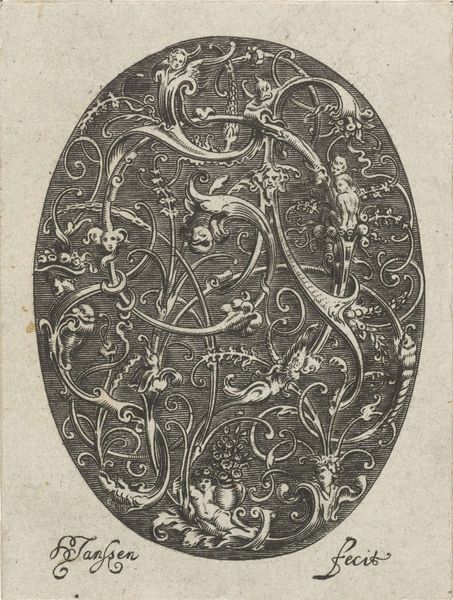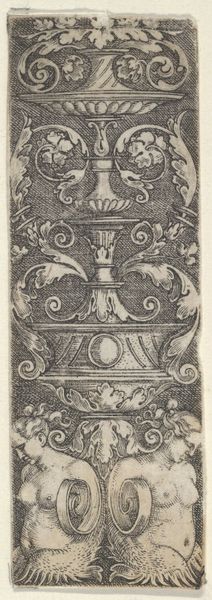
print, engraving
#
aged paper
#
toned paper
#
baroque
# print
#
old engraving style
#
form
#
personal sketchbook
#
line
#
sketchbook drawing
#
sketchbook art
#
engraving
Dimensions: height 62 mm, width 10 mm
Copyright: Rijks Museum: Open Domain
Editor: This is "Strook met kroon en vissen," an engraving by Jacques Vauquer, dating from around 1650 to 1670. The artwork reminds me of an ornate, personal sketchbook design. What do you see in this piece? Curator: The most compelling thing is how this apparently simple image brims with cultural memory. Consider the crown, the fish, the ribbons—these aren’t just decorative elements. Crowns, universally, symbolize power, authority, and divine right. The fish, though...depending on cultural context, it can indicate fertility, abundance, or in early Christian iconography, Christ himself. Editor: That's fascinating. So, you are suggesting there might be multiple layers of meaning embedded in these symbols? Curator: Precisely. And Vauquer places these symbols within the structure of the ‘strip’ itself; its very shape reminds me of presentation on royal garments. Ask yourself: What is this ‘strip’ meant to evoke, what kind of object and surface does it emulate? Notice too how tightly packed the image is, with nearly no negative space – this density of images feels deliberate, and laden with symbolism from different sources Editor: So it’s not just a pretty design, but almost like a coded message about power and abundance, woven into something we might otherwise consider just decorative? Curator: Exactly. It serves to remind one of an important individual, as a keepsake; or serves to suggest continuity of belief systems. That tight space only increases that pressure, intensifying those connotations. This little strip serves a heavy symbolic and cultural purpose. Editor: This has really changed how I see the piece; it now seems charged with much more significance than before. Thank you! Curator: My pleasure; now you can't unsee these little visual signifiers, enriching our interpretation!
Comments
No comments
Be the first to comment and join the conversation on the ultimate creative platform.




